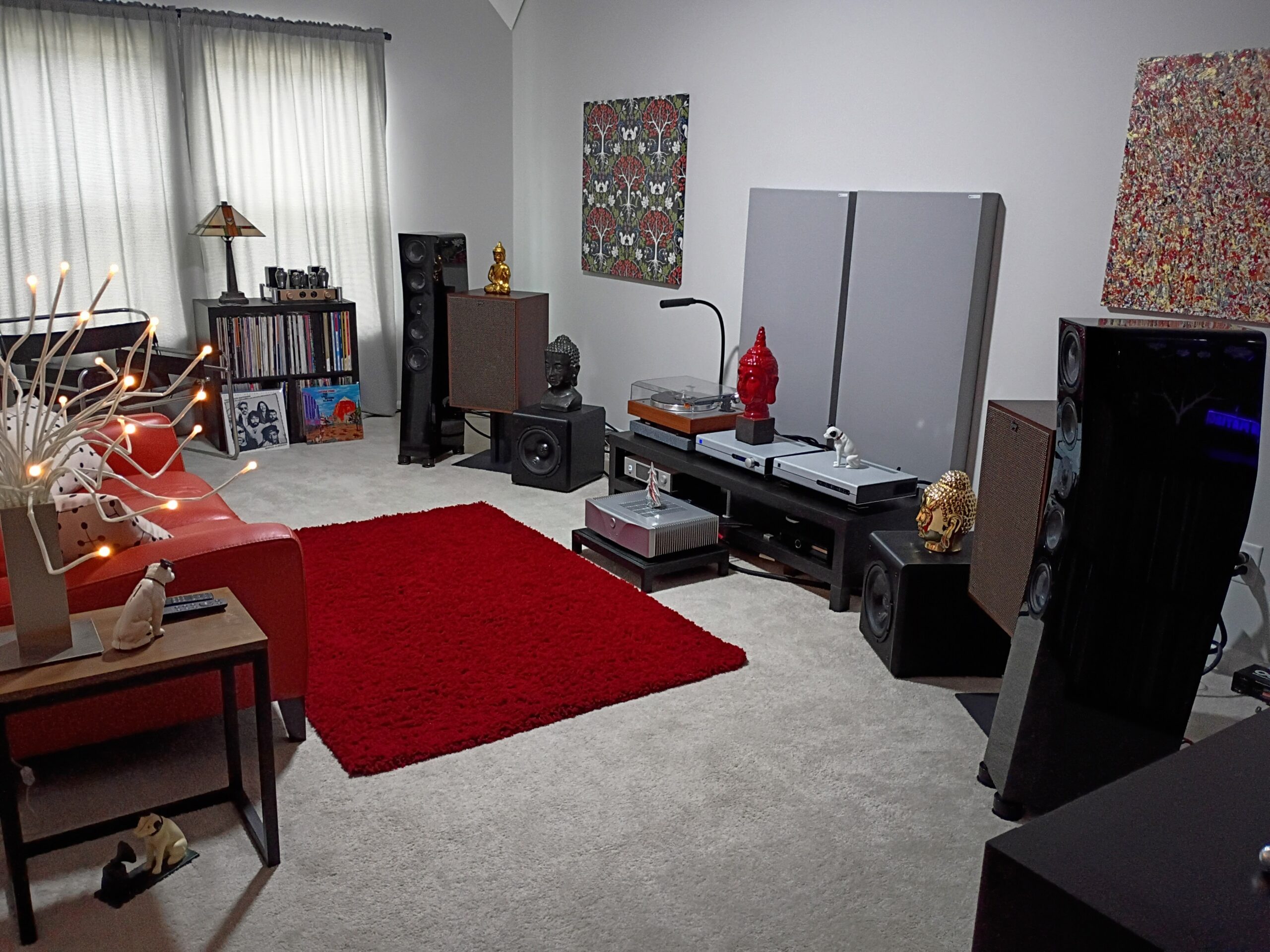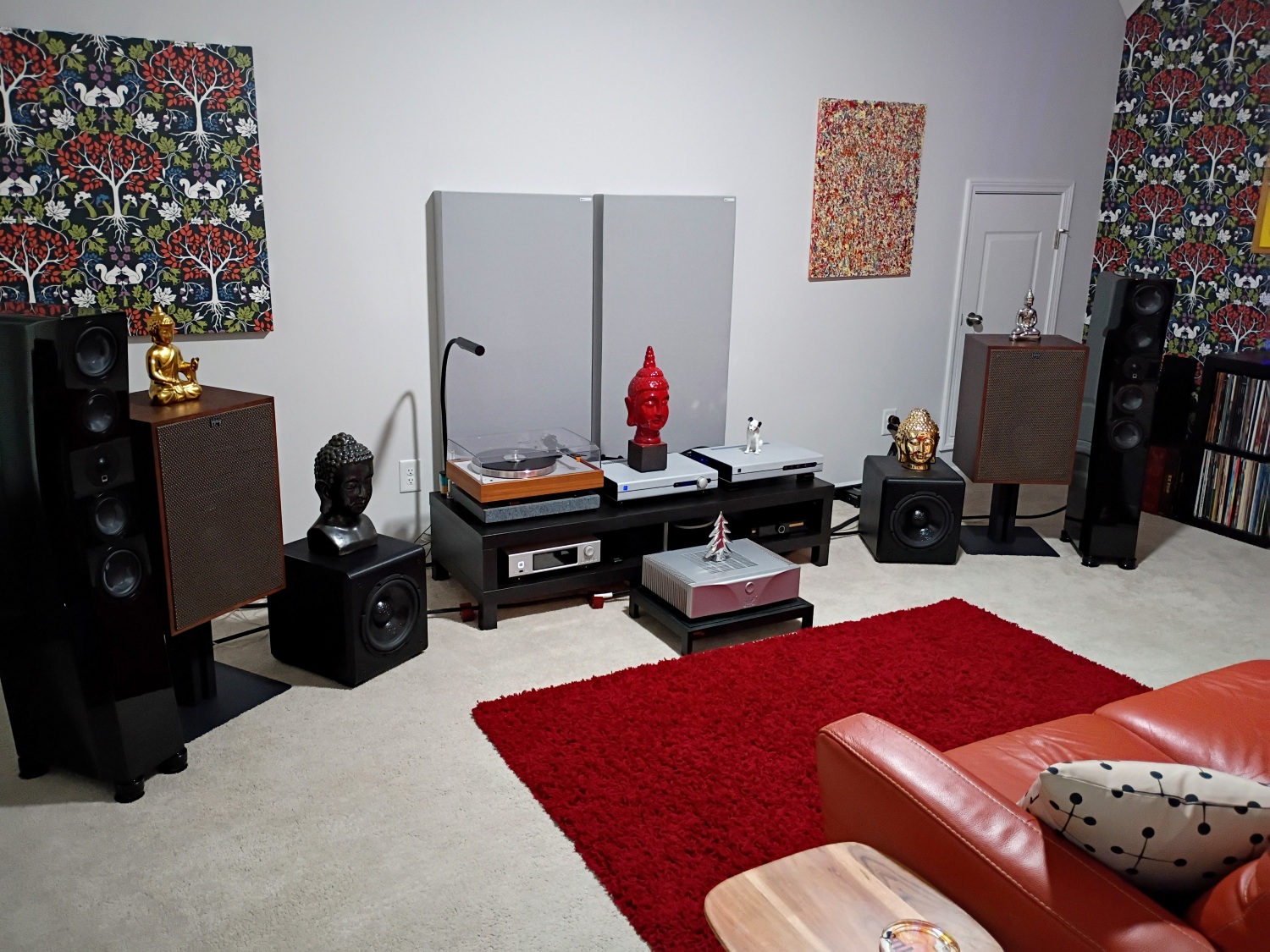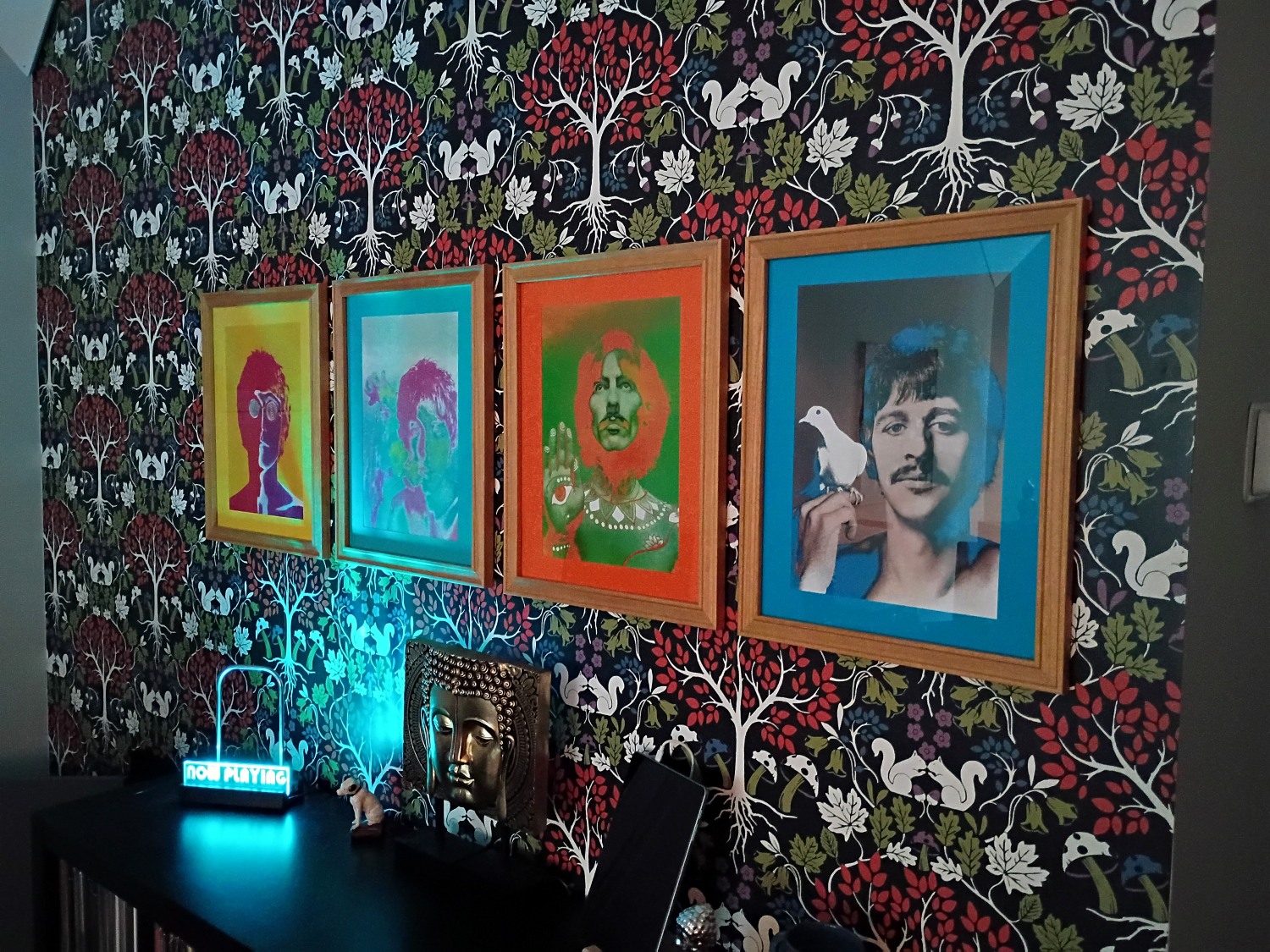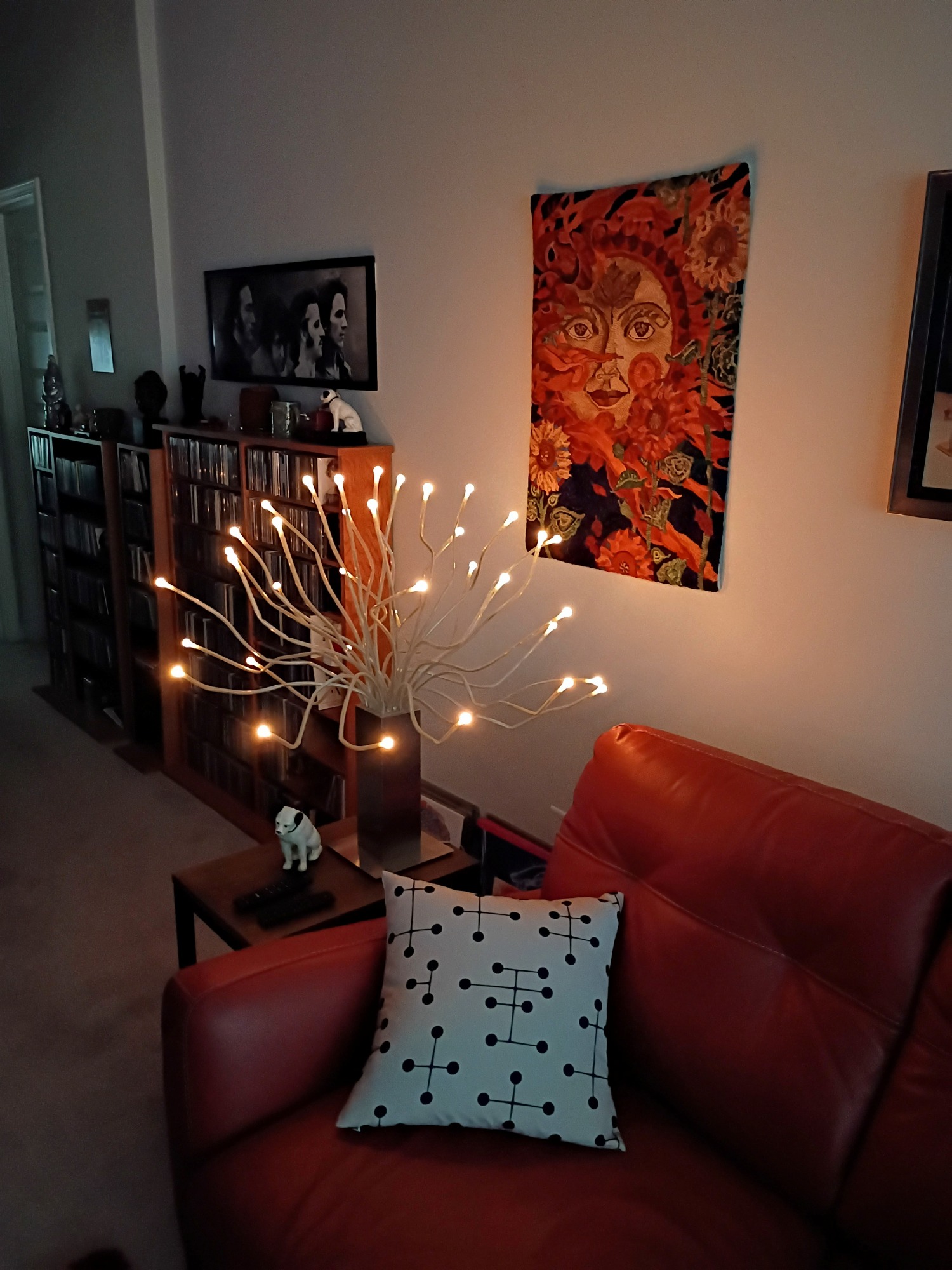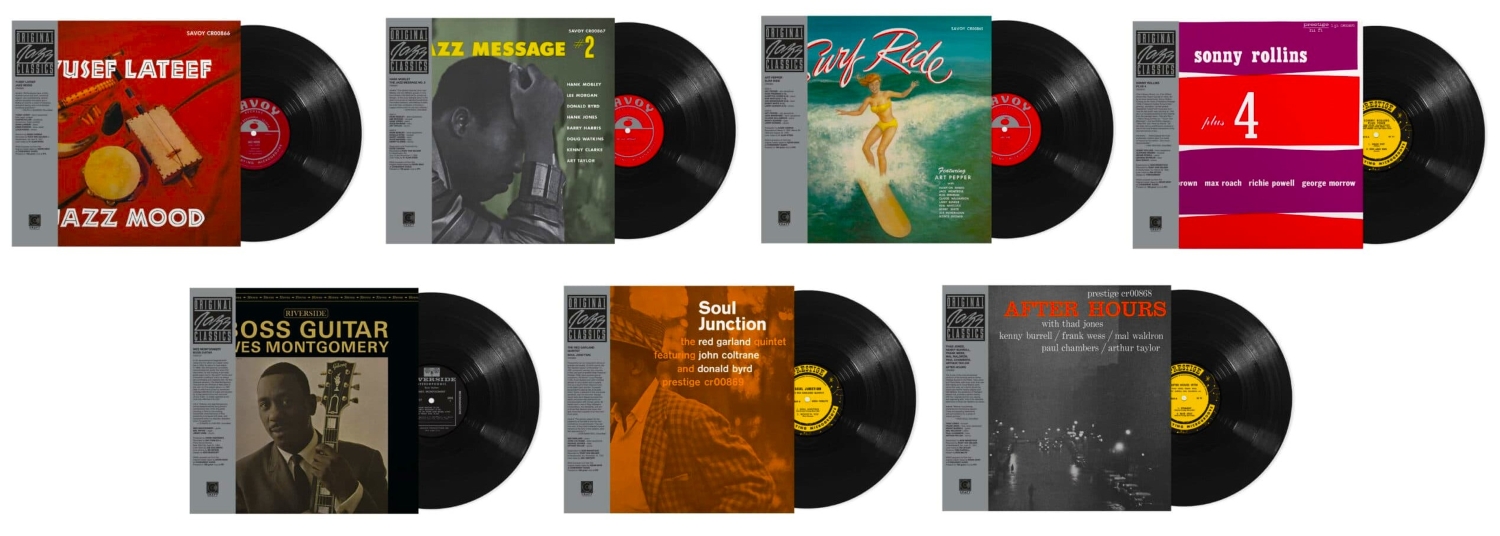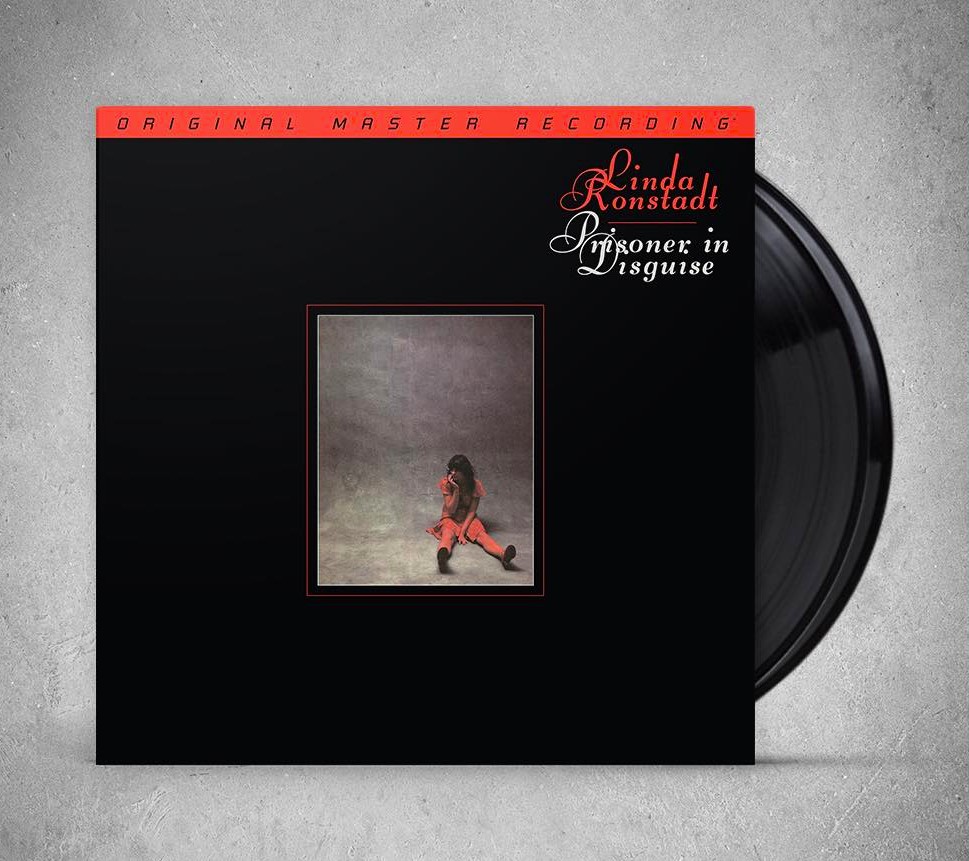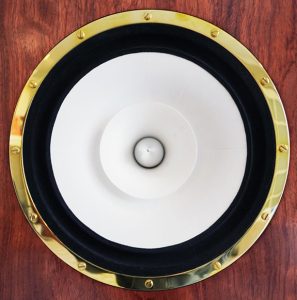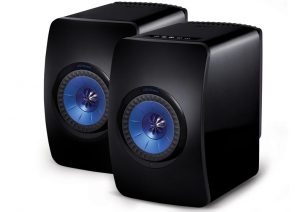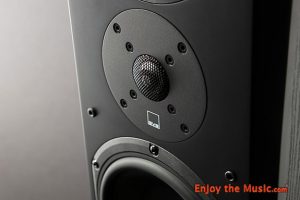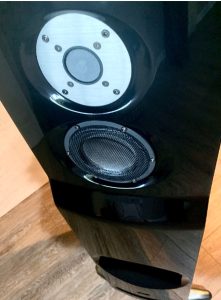Last year I had the good fortune to review Audioengine's B2 Bluetooth Speaker—a product that amazed me, not only with its impressive sound and build quality, but also with its portability and flexibility—I carted the B2 all over creation on vacations and getaways and it never failed to impress me (or friends and family) with its astonishingly good sound—especially coming from such a modest package. This was my first experience with any Audioengine product, and it was an eye-opener—any impressions I might have previously had of Audioengine as simply a maker of pretty good, relatively generic computer speakers was quickly vanquished. The fit, finish and heft of the B2, as well as its room-filling sound was simply mindblowing, and nothing that I thought I knew about Audioengine prepared me for the experience.
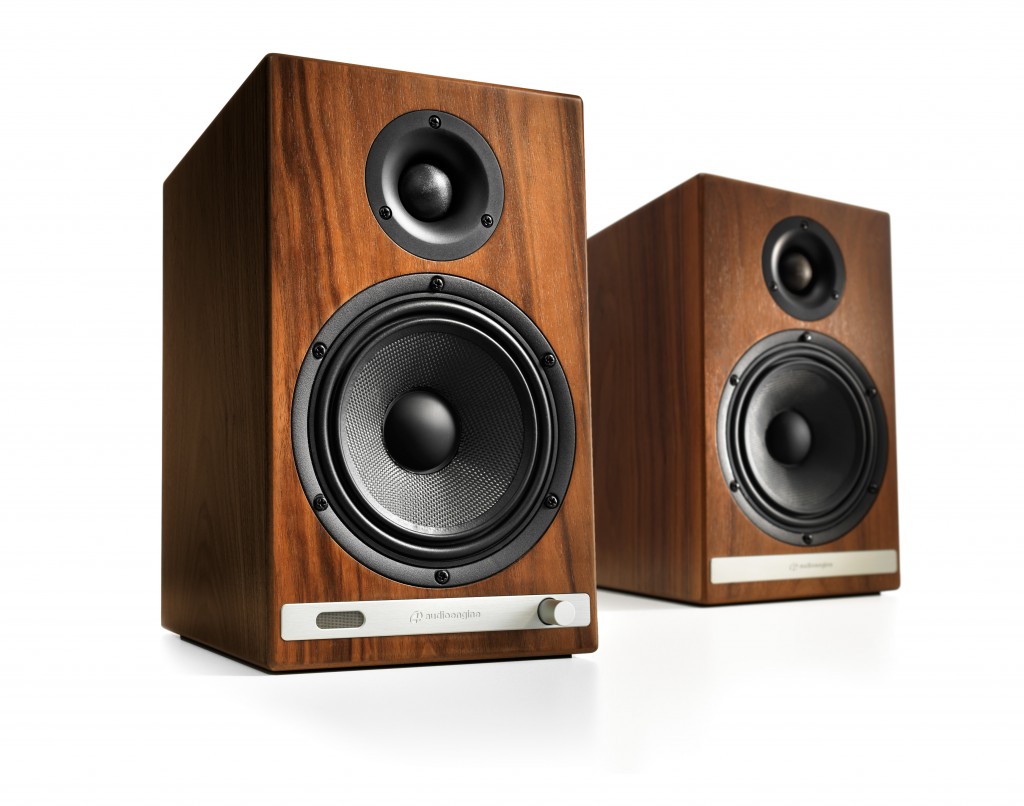 Introducing the HD6
Introducing the HD6
The new HD6—which, by the way, is Audioengine's flagship powered speaker—carries on in that same tradition; when it arrived at the front door, I don't know why, but I just wasn't expecting the box to be quite so large, or so heavy! Seriously, the packaging for these units is beyond overkill, and the fit and finish of the double-boxing is almost as impressive as the product itself—they could probably easily survive a flip-and-rollover by a FedEx truck. When you finally get through the layers of cardboard, everything—and I mean everything—comes encased in these really nicely made microfiber bags of varying dimensions—it's as if Audioengine is just begging you to take these babies on the road!
And when you pull the HD6's from the bags, it's an ooh-aah moment: the HD6's may be easily some of the handsomest small speakers I've ever seen, and nothing nearly as diminutive as I'd imagined they'd probably be. They look not at all dissimilar to, say, a really nice British mini-monitor: they're sized about the same as a pair of LS3/5A's, and with their grills on, offer classic good looks that are not at all out-of-place with that timeless British design. Remove the grills, and you see nicely rounded corner joints and a slightly-futuristic appearance. You have a choice of finishes: satin black, cherry or walnut; my pair arrived with the walnut finish, and the woodworking and cabinetry is simply stunning—they look absolutely impeccable either with or without the magnetic grills in place. Wife acceptance factor is through the roof! After hearing these babies sing for the first time, my wife's comments ran along the lines of "Those sounded great, and they're so small!" to "So we could probably get rid of those big blue (Zu Omens) things and all those amplifiers, right? That would be sooo nice!"
While the previously mentioned B2 shared the niceties of the cabinetry with the HD6's, that's about as far as the comparison goes—everything else about the HD6 powers it into hyperdrive beyond its predecessors. The first thing you notice are all the available inputs; the left speaker houses all the electronics, including a powerful 75 watt-per-channel (peak) analog class AB amplifier—you can tell from the massive heat sink on the back of the cabinet that there's no cheesy class D circuit board amp here! There are analog stereo inputs in the form of a standard 3.5mm jack, along with a stereo pair of RCA's; there's also a pair of variable-output RCA jacks that will allow connection to a subwoofer or any other equipment that might need access to the input signal. Another very handy connection is the optical digital input, which allows for easy connection of any of a number of streaming devices such as Apple TV, or even your cable box, for that matter. The optical input also serves as an entry port to the built-in 24-bit/192 kHz upsampling DAC that features the highly regarded AKM AK4396 chipset. AKM DAC technology shows up frequently in much pricier, more esoteric equipment, and only adds to the HD6's already impressive lineage.
And of course, the DAC is integral in Audioengine's Bluetooth wireless technology; their current design offers up to 3x the wireless range of previous designs, which would certainly help to minimize any signal-related hiccups during playback. Audioengine's implementation of Bluetooth uses both the aptX and AAC codecs, which they feel is miles beyond most other manufacturer's use of Bluetooth technology. AAC (Advanced Audio Codec) is used in most iDevices, and most downloads from the iTunes store employ the AAC codec. A lot of folks feel that AAC-based files offer superior sound to much more common MP3s. Audioengine shares this opinion, and they also state that if you're listening to AAC-based music, you're hearing it uncompromised by their implementation of Bluetooth.
Each cabinet also includes what appear to be heavily-plated, five-way binding post connectors; in actuality, that's not really their function—there's an included 12-foot cable of quite robust build with heavy-duty banana plugs at each end that serves as an umbilical cord between the two speakers. While the left speaker contains all the electronics and is very heavy for its size (about 18 lbs.), the right speaker is entirely passive, but still weighs in at about 13 lbs. The included umbilical cable is plenty long and heavy-duty enough for most everyone, however, there's lots of room here to "roll your own" if so desired.
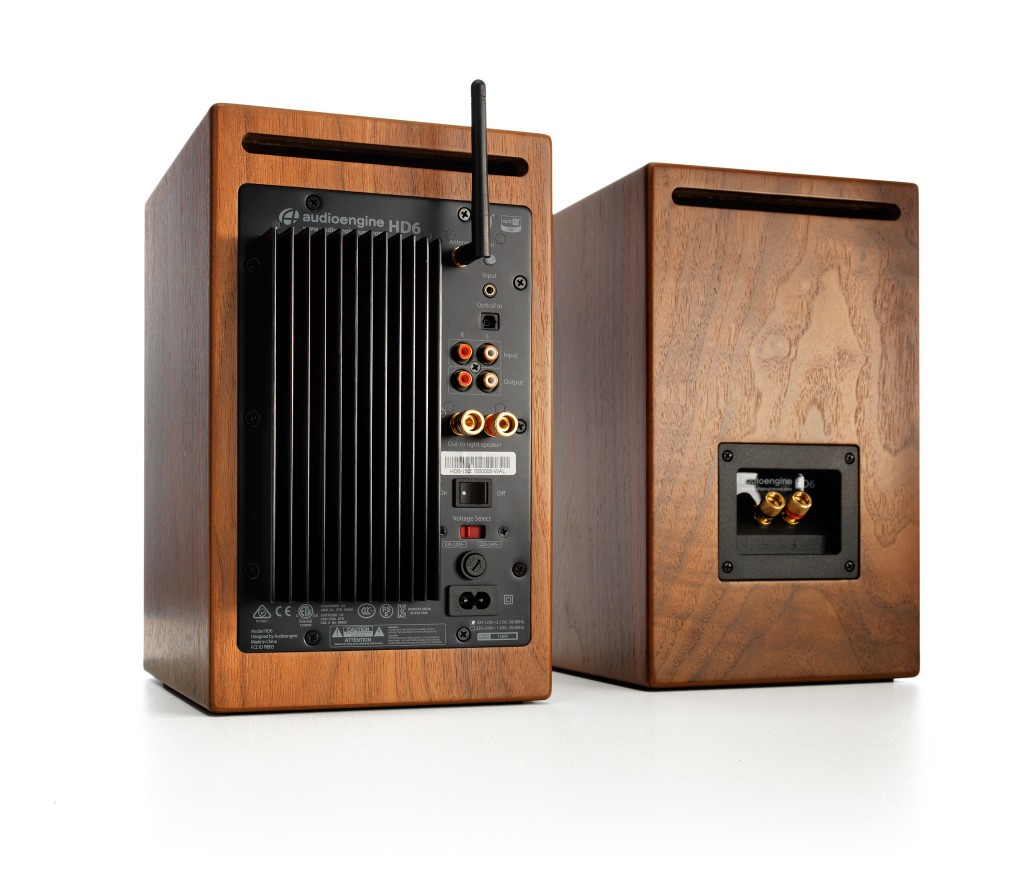
The HD6 is also switchable between input voltages, so there should be no compatibility issues worldwide. The built-in linear power supply is robust and includes a heavy toroidal transformer; that connects to a C-7 power connector. The supplied power cord is serviceable, and while this is really not that big of an issue, I'd like to have seen a standard IEC input on the HD6. This goes back to that "roll your own" thing, and it might be nice to see if a really robust power cord would supply somewhat better voltage to the built-in amplifier. But one look at the already crowded back plate on the left unit makes it pretty clear that there's a whole lot crammed in there—they'd probably have been hard pressed to make it happen, and this is really only going to be an issue with hard-core fanatics.
In terms of the driver complement of the HD6, this is Audioengine's most ambitious design to date, and each speaker incorporates a 5.5" Kevlar woofer with a 1" silk-dome tweeter, the largest driver complement found in any Audioengine product. The woofers are built around die-cast aluminum frames with fairly massive magnet and voice coil structures, and the silk-dome tweeters are an upgraded design intended to offer extended highs and improved stereo imaging. The cabinets of the HD6 are also an entirely new design; they're made from thicker panels and have improved internal bracing aimed at reduced cabinet resonances—this was totally borne out by my listening experience.
There are only two controls available on the HD6; the power switch is located on the back of the left speaker, and on that speaker's front panel there's a continuously variable volume control that has a really nice operational feel. Audioengine also supplies a smallish (but very nice!) solid aluminum remote control that allows you to control volume, muting and sleep mode, which places the unit in what is essentially standby mode. It can be easily awakened by pressing either of the volume or sleep buttons.
Setup and listening results
So, first of all, I set the speakers up in my regular listening room on 24" stands about three feet from the rear wall and about two feet from the side walls. My listening room is 12.5 feet wide, so the supplied umbilical cable was just about perfect for between the two speakers. I attached the Bluetooth antenna to the left speaker and paired it with my Android tablet, then started playing music through JRiver Media Center 21. The supplied manual says that the speakers could take as long as 40-50 hours of playback to really break in, and they were still quite cold from having spent days on a FedEx truck, so I let them basically play for a couple of days before doing any real listening. Just doing my normal things around the house, I thought they sounded quite good cold and right out-of-the box.
When I sat down to really take a good listen, I have to admit, I was a bit underwhelmed initially at the sound—it just seemed a bit flat, and there didn't really seem to be enough volume available. I'm using JRiver's Gizmo app on the tablet, so everything is essentially being controlled by the tablet—but no combination of adjusting the volume control on the speakers or tablet seemed to give me the kind of sound I thought I should be getting. Now my overall impression of the Audioengine B2 was over-the-top great, but that's probably mainly based on getting such great sound from such a small box in mostly non-traditional settings. Now, of course, I probably needed to give the speakers sufficient time to break in—they'd only been playing maybe 12 hours or so scattered over a couple of days, so I soldiered on.
Another day or so of playing about with the Bluetooth aspect was still leaving me somewhat cold. The overall sound was lacking the kind of warmth I was used to getting from my selected music choices, and was just short of uninvolving. I'm still thinking, give them more time; in the meantime, I'm taking a look at the back panel of the left speaker, and a light bulb goes off—look at all these inputs! Now here's another small quandary—the input panel of the HD6 is on the far left side of my room, and my equipment rack is on the far right side. I scrounged around and came up with a 5-meter AudioQuest 3.5mm to RCA cable that I promptly plugged into one of the available outputs on my Acurus preamp. HOLY SHITE!!! What an un-freaking-believable transformation—the sound went from lackluster and flat to LIQUID in a nanosecond—and with tons of available volume!
At this point, I'm grooving to just about everything, everything sounding incredibly good, maybe the bass seems a bit heavy-ish. With speakers of this general size, there's almost always going to be a fine line one must navigate to get the bass just right. So I pull the stands further out into the room, and now we're about five feet from the rear wall. I move them just a tad closer to the side walls, probably about 18", with the speakers toed-in and aimed at a point somewhat behind the listening position. Tonally, everything just snaps into place, and I crack into my collection of female vocalists to try and gauge how well these puppies seem to be imaging.
First up—Jennifer Warnes' Famous Blue Raincoat, the title track, which I consider one of the best performances extant for evaluating the midrange of any loudspeaker. Wowza! It sounded just short of amazing, with all the hallmarks of good vocal reproduction: midrange warmth, tonal accuracy, precise imaging and localization and the kind of realism that just floored me! I then started playing various cuts from albums by Patricia Barber—Nightclub contains her interpretations of mostly standards (which she basically nails on every cut) and is particularly well recorded. I love her rendition of "Autumn Leaves," where her piano and vocal are spot-on, and the bass player just kills it! You can literally close your eyes and see the performers in front of you. Another really great album is a recent release from Stacey Kent, The Changing Lights, where she digs more deeply into the bossa nova oeuvre that has been dominating her work of late. Another incredibly well-recorded album, just about every cut bathes your ears in you-are-there aural splendor.
I then started playing cuts from one of my favorite guitarists, Eric Johnson, to try and get an idea of how the HD6's held up with music that was a little more dynamically challenging. His 2005 album Bloom continues with the decidedly off-kilter mix of blues/rock/jazz/alt country that tends to populate most of his albums; two tracks in particular serve for me as a real test of any speaker's ability to handle the transients created by electric guitars. "Hesistant" finds Eric in a very Wes Montgomery-inspired mood, and while it doesn't push the limits dynamically, it is absolute ear-candy and just begs to have the volume turned up! The HD6's never skipped a beat—their presentation here was very close to my personal reference for how this very seductively involving music should sound. Next up was "Magnetized," which is very mid-seventies Jeff Beck-ish, setting an irresistible groove right out of the gate that, once again, just insists on being cranked at maximum volume. This very electric music is followed by the album's closer, "Ciel," which offers an acoustic guitar solo of staggering beauty. If you've never heard this album, it comes very highly recommended—Eric Johnson is in peak form here, and chances are he covers a genre that will appeal to everyone.
I could go on forever, but the bottom line is that, for the relatively diminutive size of the HD6's, they're capable of producing remarkably involving music—the fully-analog Class AB amplifier is obviously very well-made and well-mated with the drivers. I couldn't push these babies into any kind of distortion, and I played just about everything from hard rock to full scale orchestral. Of course, you have to use terms like "within their limitations," but I couldn't really find anything that the HD6's didn't seem to excel at. The key to getting near-reference sound from these speakers are: 1) a good source that supplies a reasonable voltage drive, and, 2) carefully considered room placement. The HD6's performed well when hooked up to anything through the analog inputs, from personal portables to even a turntable, and the volume control is generally sufficient to produce sufficiently satisfactory output levels. But if you really want to hear them sing—give them the signal they crave and plug a preamp into that RCA input.
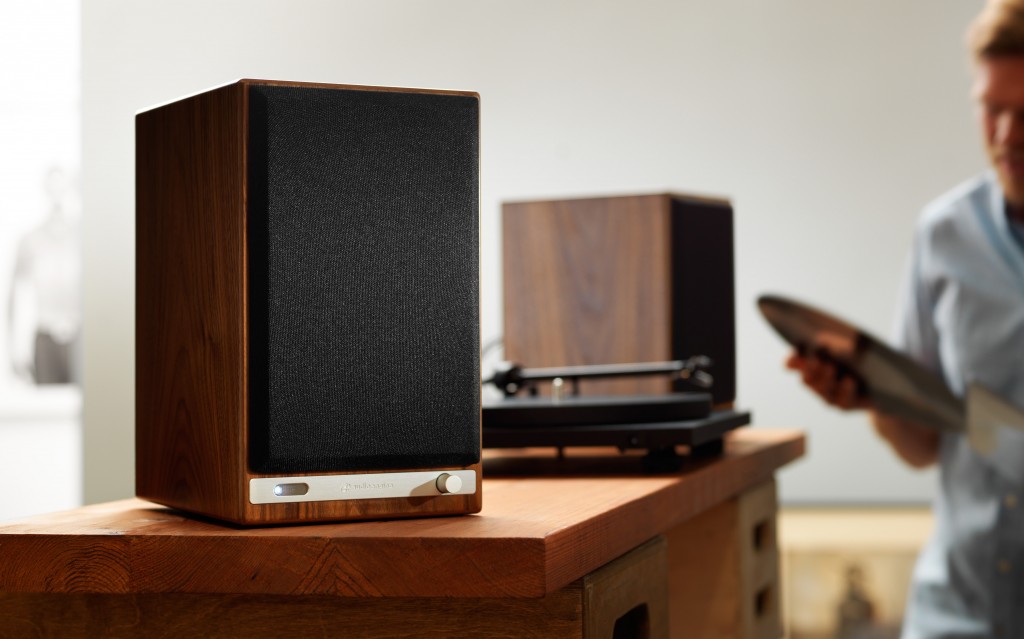
I can see how placing them on a bookshelf or near any back wall boundary might tend to exaggerate the bass somewhat, but hey—that might be some young kid's cup of tea! I can totally see these speakers in small spaces like dorm rooms, apartments, tiny houses—you name it. Heck, I did most of my listening with only the HD6's outputting any sound, but for kicks I turned on the Def Tech sub that's also controlled by the Acurus pre, and let me tell you—that full scale orchestral music really came to life! I checked out the optical input by watching a couple of movies through my BluRay player and was pretty surprised at how well they sprang to life with only two-channel sound. Even cable television sounded great!
One aspect of the HD6 that I have to admit I did not fully explore would be the built-in DAC. I'm currently using the PS Audio NuWave DSD DAC in my main system—it's a gamechanger in terms of great computer audio sound, and a prime contributor to my current level of audio nirvana. The audio content from the video devices that were attached to the optical input was outstanding, but I can't make any kind of assessment of how it dealt with any musical content based on that limited exposure.
While Audioengine's implementation of Bluetooth connectivity is state-of-the-art and will doubtless appeal to a bevvy of potential buyers, my experience was unfortunately less than spectacular. Perhaps some of the blame for my poor results with Bluetooth sound lies with the shortcomings of my setup, which only includes Android options for connectivity. I don't own or use any iDevices, and I don't use iTunes for my music library, so I'm really not in any position to render judgement as to whether they offer any kind of improved performance with Audioengine products.
I know that Audioengine's bread and butter is wireless streaming via Bluetooth, but I personally just don't believe that wireless Bluetooth sound is quite ready for full-blown, audiophile, ready-for-prime-time critical listening. Great for background music, great for out by the pool or barbecue—just maybe not quite yet in the listening room. Besides, most of these kids out there—do they really even listen to music critically? The point could be moot, if it works well with their streaming or i-device, everything could be all good. If the folks at Audioengine have any suggestions to help improve my Bluetooth results, I'm all ears!
I also noticed while in my listening room that the HD6's are somewhat sensitive to noise from dimmers and adjacent equipment. They're both magnetically and video shielded, but it didn't take too much time before I figured out that I need to kill the overhead lights and turn off my computer monitor to get acceptably cleaner sound.
Conclusion
The HD6's offer an imposing package of features that has the potential to serve as an impressive stand-alone system—just add a source de jour. So am I ready to chuck my collection of big amps and floorstanding loudspeakers? Probably not. But did I have an intensely alcohol-infused psychedelic daydream about the possibility? Maybe. The HD6's, in combination with a good source signal and thoughtful room placement, are as tonally balanced as any small speaker I've ever heard, and just might be the last speaker you ever need to buy. Are they the be-all, end-all with regards to small monitor speakers? No, they are challenged by extreme low frequencies—that's going to be obvious to just about anyone, but "within their limitations," they offer an impressively good taste of what music really sounds like. My wife keeps talking about downsizing and scaling back—perhaps I should think about this a bit more. Besides, the HD6's are just about broken in and only now reaching their stride—things can only get better from here! Very highly recommended!
Audioengine HD6 Powered Speakers
MSRP $749
Audioengine
Images courtesy of Audioengine




